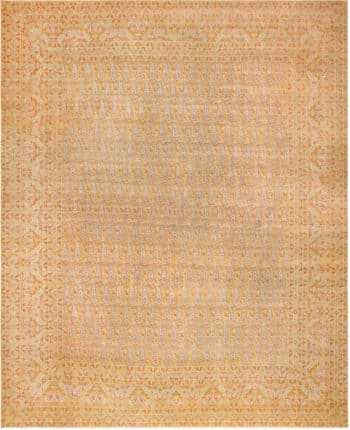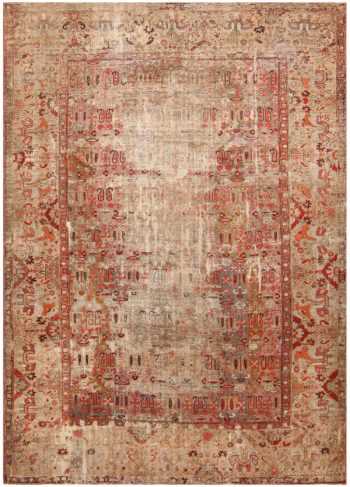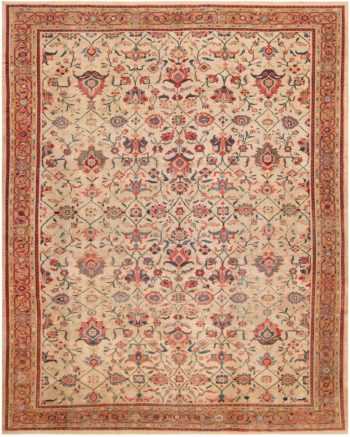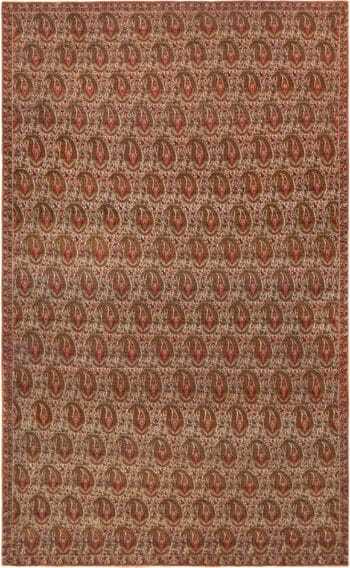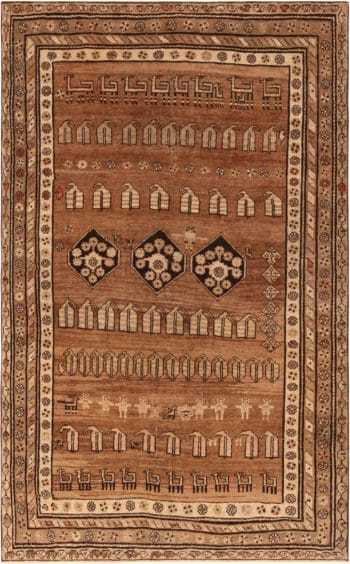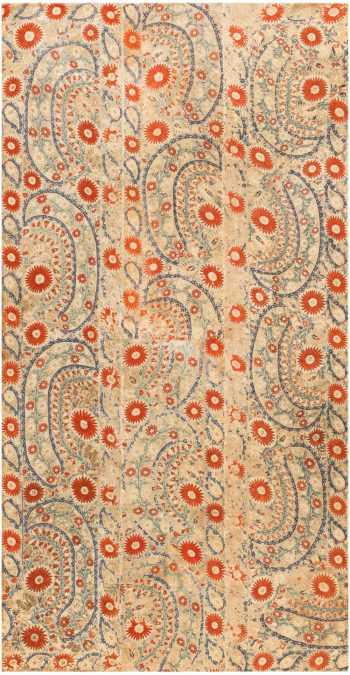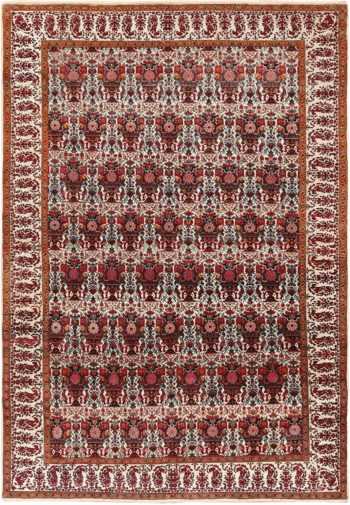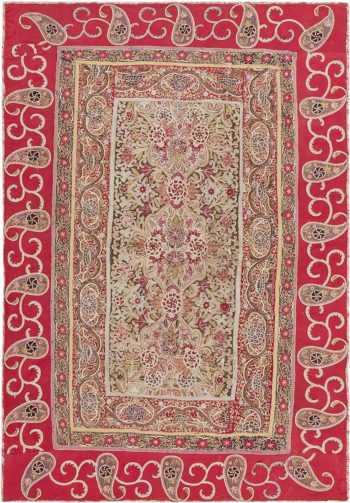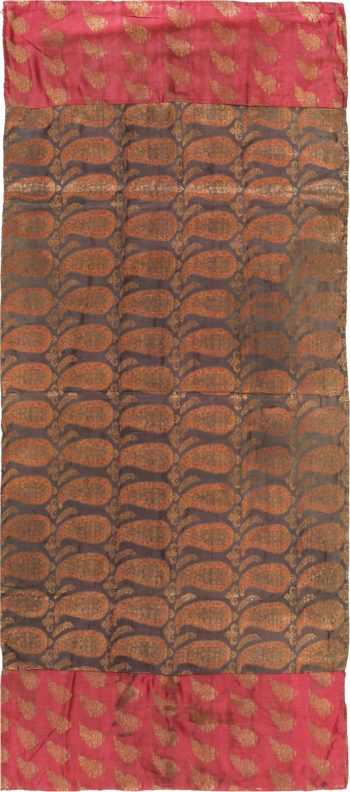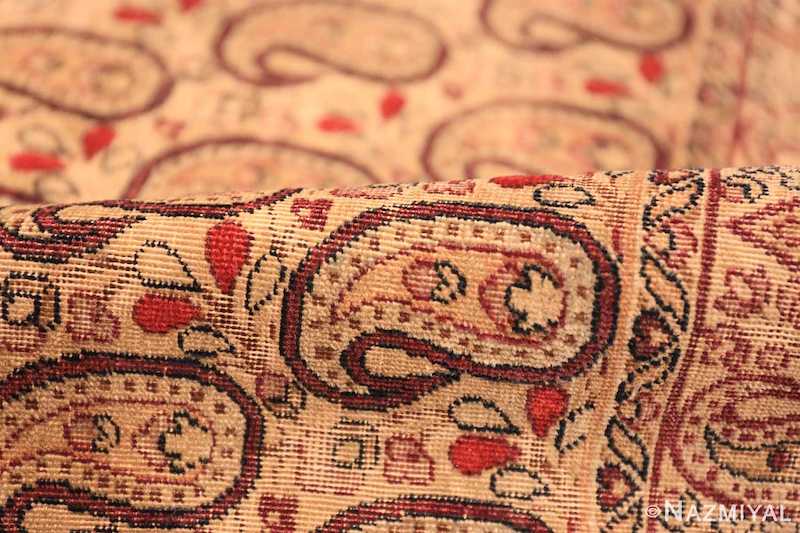Boteh Paisley Pattern Rugs
View some of our boteh pattern paisley rugs:
Antique Caucasian Karabagh Tribal Geometric Paisley Design Long and Narrow Hallway Runner Rug 72670
Size: 3 ft 3 in x 18 ft (0.99 m x 5.49 m)Antique Tribal Geometric Caucasian Karabagh Paisley Design Hallway Runner Rug 72669
$12,000.00Size: 3 ft 3 in x 17 ft 10 in (0.99 m x 5.44 m)Large Antique Paisley Design Persian Kerman Rug 72147
$125,000.00Size: 14 ft 3 in x 17 ft 3 in (4.34 m x 5.26 m)Rustic Antique Tribal Paisley North West Persian Gallery Size Abrash Rug 72150
$24,500.00Size: 5 ft 4 in x 17 ft (1.63 m x 5.18 m)Large Casual Paisley Design Neutral Earthy Antique Rustic Persian Sultanabad Rug 71953
$28,000.00Size: 10 ft 1 in x 16 ft 5 in (3.07 m x 5 m)Large Neutral Antique Tabriz Persian Paisley Design Carpet 50219
$22,000.00Size: 10 ft 10 in x 16 ft (3.3 m x 4.88 m)Beautiful Green Shabby Chic Antique 18th Century Rustic Paisley Deccan Indian Rug 42106
$19,000.00Size: 11 ft x 15 ft 5 in (3.35 m x 4.7 m)Antique Persian Khorassan Paisley Design Kalamkari / Qalamkari Textile 72641
$14,500.00Size: 6 ft 3 in x 14 ft 10 in (1.9 m x 4.52 m)Rustic Antique Tribal Persian Paisley Design Bakhtiari Hallway Runner Rug 72021
$8,800.00Size: 4 ft x 12 ft 9 in (1.22 m x 3.89 m)Antique Jewel Tone Tribal Paisley Design Persian Bidjar Hallway Runner Rug 50280
$8,800.00Size: 3 ft 2 in x 12 ft 9 in (0.97 m x 3.89 m)Beautiful Decorative Antique Rustic Ivory Persian Sultanabad Jewel Tone Rug 72081
$26,500.00Size: 9 ft 3 in x 11 ft 3 in (2.82 m x 3.43 m)Fine Exquisite Antique Persian Senneh Paisley Design Rug 72860
Size: 4 ft 3 in x 7 ft (1.3 m x 2.13 m)Vintage Tribal Brown Earth Tone Persian Paisley Bidjar Rug 72152
$4,400.00Size: 4 ft 2 in x 6 ft 5 in (1.27 m x 1.96 m)Rare Antique 17th Century Ottoman Textile Embroidery 41498
$18,500.00Size: 3 ft 2 in x 6 ft (0.97 m x 1.83 m)Fine Antique Ivory Silk and Wool Persian Vase and Paisley Deign Farahan Rug 44916
$6,900.00Size: 4 ft 1 in x 5 ft 10 in (1.24 m x 1.78 m)Antique Persian Paisley Rashti Embroidery Textile 46521
$5,900.00Size: 3 ft 10 in x 5 ft 7 in (1.17 m x 1.7 m)18th Century Antique Persian Silk Paisley Embroidery Textile 70852
Size: 2 ft 5 in x 5 ft 4 in (0.74 m x 1.63 m)Antique Persian Paisley Kerman Rug 72410
$1,200.00Size: 1 ft 9 in x 1 ft 4 in (0.53 m x 0.41 m)Long and Narrow Open Field Antique Indian Paisley Shawl 45486
Size: 7 ft 7 in x 1 ft 1 in (2.31 m x 0.33 m)
Learn More About Boteh Paisley Pattern Rugs
Meanings of Boteh Plant Motifs / Paisley Pattern in Antique Rugs and Carpets
Click Here to Go Back to List of Symbols
What are the origins of the terms / words boteh / paisley?
The Boteh pattern, more commonly known in the West as “paisley”, is incredibly common in the rugs of many different cultures. Especially those located in the Middle East.
The word “boteh” comes from the Persian word for shrub or bush. Alternate names for the motif include “Persian Pickles” in America, and “Welsh Pears” in western Europe.
The boteh paisley pattern shape in rugs / textiles
The paisley pattern is particularly prevalent in wool or silk textiles from the areas of Kashmir in India, and Kerman in Iran. The Boteh symbol is often seen in the shape of a teardrop, however clusters of these shapes, or more abstracted versions of the shape are also prevalent.
What does the paisley boteh design represent?
Commonly, this motif represents the ideas of eternal life and fertility, and can also symbolize fire, and the season of autumn. It is often used to symbolize expectant mothers and pregnancy.
The origins of the boteh / paisley design pattern
The boteh paisley design motif is an ancient symbol that appears to have its origins in ancient Persia, but it is found in cultures all around the world. It continues to be a popular motif that appears in carpets from Kerman and Yazd. However, it is also common in antique carpets from various regions. It appears in some ancient historical examples that go back over 1,000 years throughout many cultures including Persian, Greek, and Egyptian.
Let’s explore the boteh paisley pattern meaning and roots a bit deeper
Paisley Pattern Zoroastrian Roots
Several examples of the boteh symbols can be found in Sassanian silks from the 6-7th century CE. They are typically found on silks and appear in both carpets and textiles throughout the region. Although the word translates to “bush” or shrub, its meanings are much deeper than that.
It might be noted that there are as many variations of this ancient pattern as there are interpretations of its meaning. There is no standard format, but the elements are always the same. The symbol consists of a border in the shape of a teardrop, sometimes with an elongated and curved top. It typically contains an ornate design in the center, but not always.
The boteh is often translated to mean “seed,” which suggests the whole always exists within the part. It represents the concept that new life springs from within a tiny seed. The concept of the seed is also a representation of renewal and regeneration. Many interpretations have been suggested for this symbol.
The Eternal Flame
Sometimes, the flame has been referred to as the Flame of Zoroaster and is a symbol of the flame that burns continually in Zoroastrian temples. The Zoroastrian flame is the heart of worship practice. Zoroastrianism began as individual worship in homes, and worship in temples was not described in ancient texts. The first records of temple worship involved open air gatherings and involved the lighting of a fire. Later, temples were built called “fire temples.” A fire is maintained in the sanctuary to represent Zoroastrianism as a source of light during prayer.
The fire is kept in a special urn designed for this purpose. The boteh symbol has a remarkable resemblance to the image of the urn with the fire shooting from the top of the vessel. These special urns are often highly decorated, much like the designs on the inside of the paisley. It is easy to see the connection between the boteh and the eternal flame.
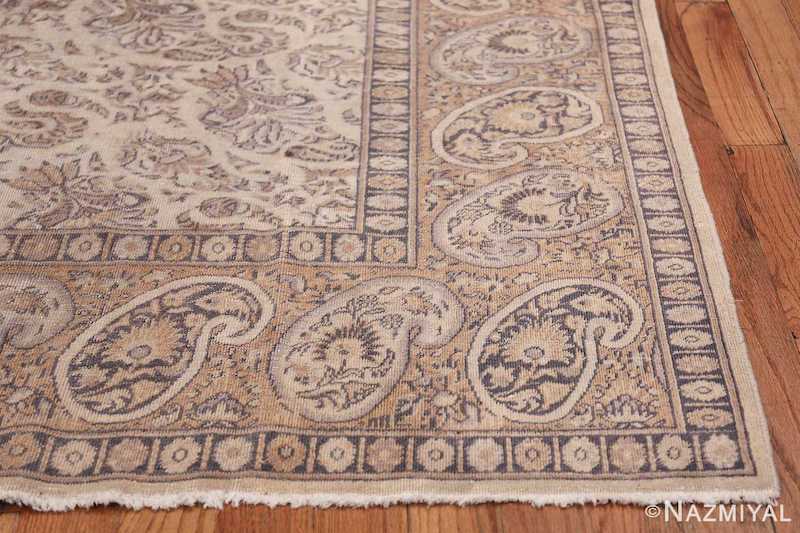
The paisley design in the border of a Turkish Sivas carpet.
Cypress Tree
Some suggest the boteh is a combination of a floral spray and the symbol for the cypress tree. The cypress tree is a Zoroastrian symbol for life and eternity. The cypress tree appears frequently in Zoroastrian folk art dating back to Iranian works of the 17th and 18th centuries, suggesting the connection of the works to its Zoroastrian roots. Let’s explore these various interpretations a bit deeper.
The interpretation of the boteh as the cypress tree also has Zoroastrian roots. The symbol of the Cypress tree is often found throughout Persian rugs. It was also a common symbol in formal gardens, reaching its branches skyward towards the heavens. It is a long-lived tree, which led to its symbolism as representing eternal life.
In Zoroastrian poetry, the word for tree is the same as the word for “immortality” or “deathlessness.” Trees of many types are associated with oracles and prophetic vision. Cypress trees are mentioned in connection with these sacred concepts throughout poetry and ancient writings. During Zoroastrian ceremonies, small branches and twigs of the cypress tree are an important part of the ritual.
The Zoroastrians reference a sacred tree on the Uber Mountain in central Iran. It is known as the Cypress of Kashmar. This tree is estimated to be around 4,000 years old and is believed to have seen dawn of ancient Persian culture and the Zoroastrian religion. This tree is considered to be a sacred site and holds a special importance in the Zoroastrian religion.
Often Zoroastrian temples are outdoors and have been known to include cypress trees flanked on both sides by the eternal flame. During the Sassanid period, cypress trees were often planted to shade the tombs of saints or important religious figures. Today, it is still believed that to cut down a cypress tree is to cut your own good fortune and could result in disaster or disease.
Paisley Pattern Interpretation
All evidence points to the roots of the boteh in ancient Zoroastrian religious practice. It is easy to see the connection between the boteh and both the eternal flame and the cypress tree. The roots of the symbol in ancient Zoroastrian religion are clear. Zoroastrianism arose in ancient Persia and is one of the oldest religions in the world. We will probably never know whether the ancients intended for the boteh to represent the eternal flame or the cypress tree, and there is certainly substantial reasoning behind both of these interpretations.
As Persian rugs spread throughout the world, many cultures adapted the symbol, but they reinterpreted it and gave it their own meaning. In western culture, it was adapted to become the “paisley” and used as a purely decorative design. The paisley is a fascinating rug symbol, and now that you know something about its ancient roots, it gives an even more special meaning to the beautiful designs on Persian carpets. At Nazmiyal, we have many beautiful rugs that are graced by this ancient symbol.



